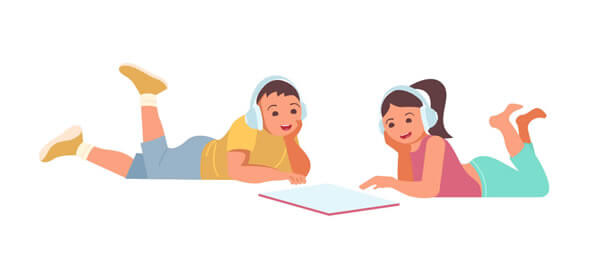

We are often asked what the difference is between children’s audiobooks and young adult audiobooks. Children’s audiobooks and young adult audiobooks are two distinct categories of literature, each crafted with its audience’s age, developmental stage, and emotional maturity in mind.
Children’s audiobooks are designed to spark curiosity and imagination in younger minds. These audiobooks tend to have themes that revolve around simple, universal ideas like friendship, adventure, and moral lessons. The language is accessible, and the plots are straightforward, reflecting the world through the lens of youthful wonder. Normally, children’s books are full of illustrations, so talented narrators must create those pictures in the child’s mind using only words.
In contrast, young adult (YA) audiobooks cater to the complex emotional and intellectual landscapes of teenagers. While still rooted in compelling stories, YA literature delves deeper into the complexities of identity, love, societal pressures, and personal struggles. The language is more sophisticated, and the themes are more mature—dealing with real-world issues that resonate with a teen’s journey toward adulthood. YA audiobooks often tackle darker, more intense subjects like mental health, social justice, and personal loss, with characters who wrestle with their place in the world. Unlike children’s audiobooks, YA novels are less reliant on visual cues, focusing instead on character-driven narratives and emotional depth.
Children’s Audiobooks (age range)
- (5–7 years) – Short sentences, simple vocabulary
- (8–10 years) – Longer stories with simple chapters and more developed plots
- (11–12 years) – More complex storytelling, longer books and themes of friendship, adventure, and identity
Young Adult Audiobooks (age range)
- (12–15 years) – Characters in the story are typically 12-15, with themes of coming-of-age, friendships, and early romantic experiences
- (15–18 years) – More mature themes like identity, relationships, and societal issues. Characters in the story are usually 16-18 years old
In short, children’s audiobooks are typically aimed at younger kids with simpler stories, while young adult audiobooks tackle more complex themes suited for teens. The tone and writing style reflect the intended age group and their cognitive and emotional maturity.













